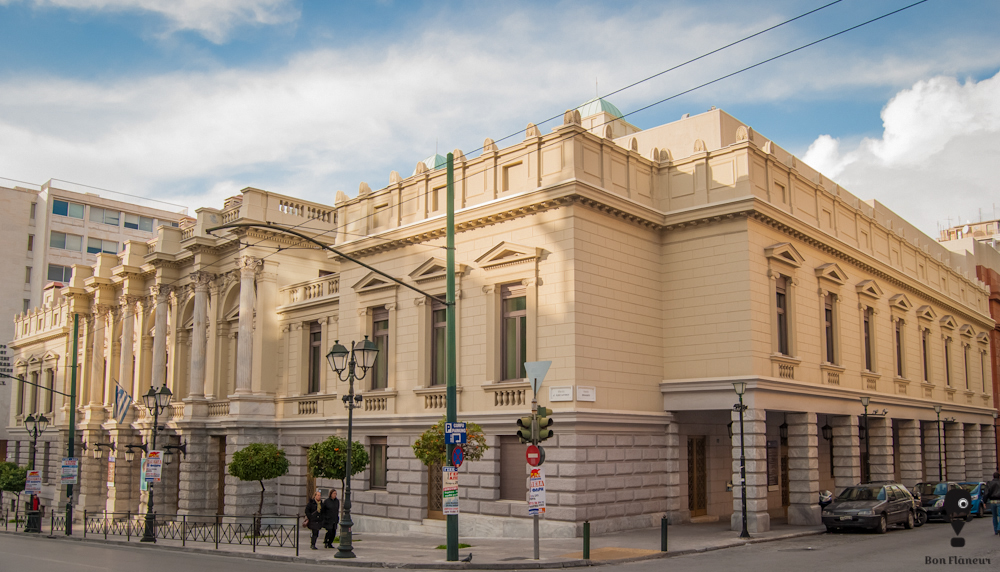National Theatre
The building of the National Theatre is of eclectic architecture and its facade is on Agiou Konstantinou Street.
Location
Timeline
Modern and Contemporary era (1821 - )
1895 Began the construction with plans by Ernst Ziller, which interrupted for 2 years.
1901 Completed.
1903 In a staging that was bold for its time and the language used, a performance of Aeschylus's Oresteia, caused serious clashes between protesting students of the philosophy school and the army, resulting in ten wounded and one dead. The clashes went down in history as "Oresteiaka".
1908 Ceased to operate with invitations only and was opened to the public.
1924 Renamed from Royal to National Theatre.
1942 Many artists were in the National Resistance and came into direct conflict with the Nazi appointed administration, with the result that many were executed.
1960 Took place the most significant expansion up to Menandrou Street with Vassilis Douras’ plans.
2005 An exemplary renovation, which lasted four years.







Share